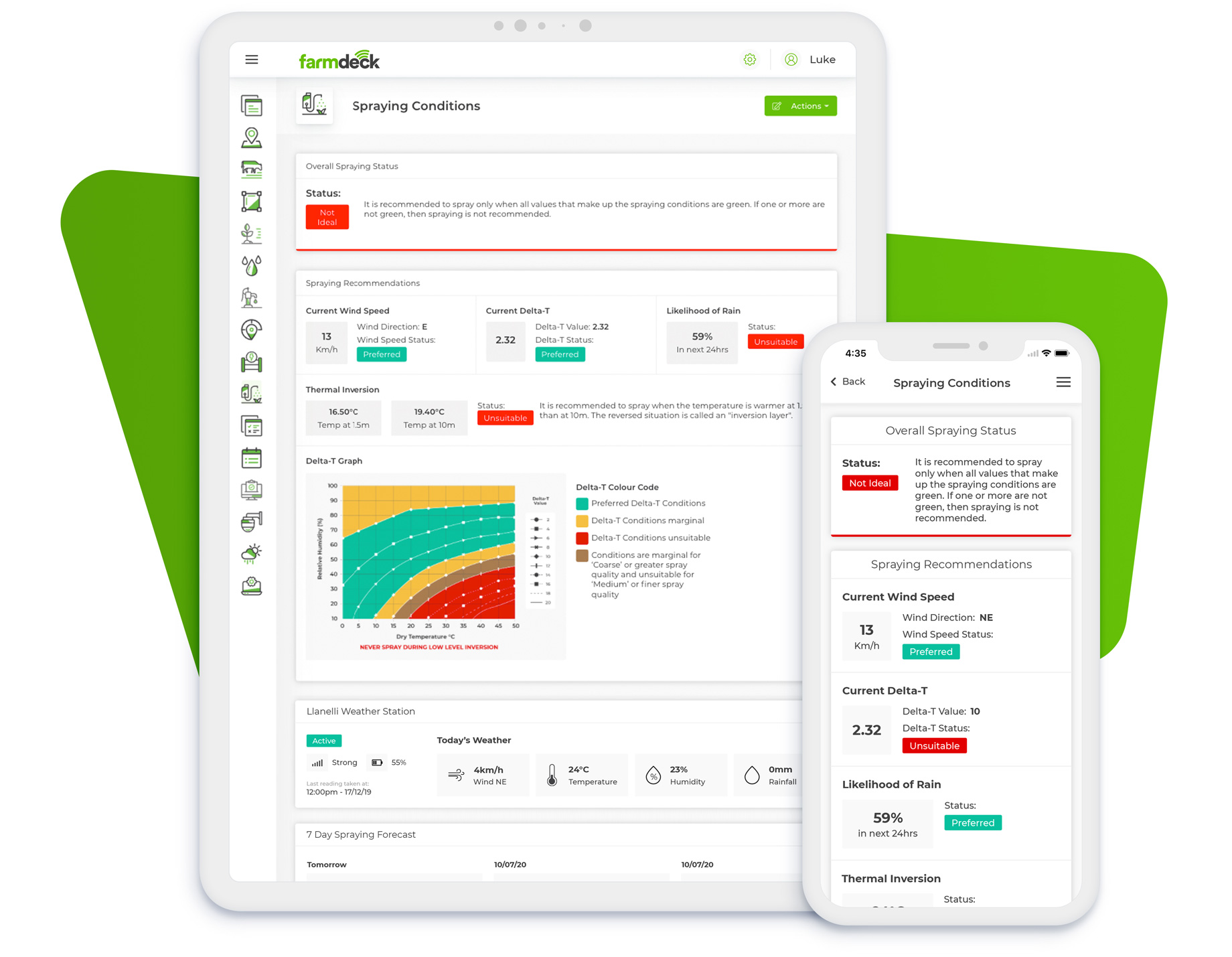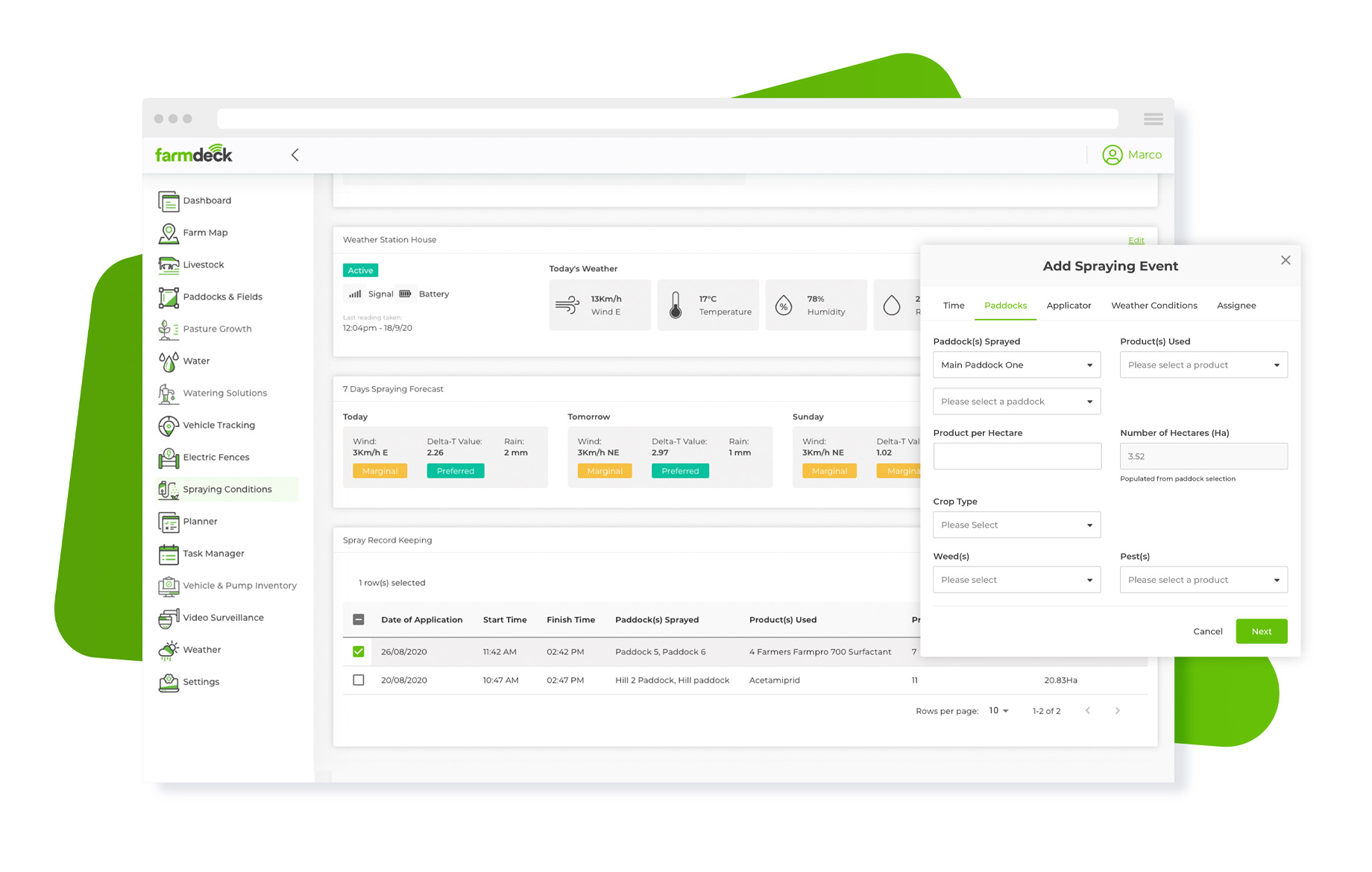Safer spraying with automatic weather assessment
Gain better visibility on the weather conditions affecting spray droplets, and reduce health and environmental impact by following Farmdeck’s recommendations.

Spraying recommendations based on four factors
The Spraying Conditions feature aims to help you spray safely by giving you an overall spraying status based on four weather factors:
- Wind speed: In general, we recommend to spray on days where the wind speed is below 15km/h. For optimal results and safety, opt for day-time spraying – once the sun is up – when the wind speed is consistently above 4 to 5km/h.
- Likelihood of rain: There is no point in spraying when it rains, so rain prediction plays an important part of our recommendations.
- Delta-T: Delta–T is used to indicate evaporation rate and droplet survival (humidity/temperature). When the value is too high, the spray droplets evaporate before the pesticide can penetrate the plant, resulting in reduced pesticide efficacy or delayed pesticide uptake. If the value is too low, droplets survive much longer which slows down the speed of pesticide uptake. A delayed pesticide uptake increases the risk of spray drift or washing off if rainfall occurs. The ideal Delta–T when spraying is between 2 and 8.
- Thermal inversion: Spray drift from temperature inversions is a major problem for pesticide applicators. It is recommended to spray when the temperature is warmer at 1.5m than at 10m. The reversed situation is called an “inversion layer”. Thermal inversion can facilitate physical droplet drift and vapor drift, which means that spraying during an inversion may cause increased lateral movement of fine drops and pesticide vapor.
These four factors are being assessed and given a status: Preferred or Unsuitable. If all of them indicate ‘Preferred’, the overall spraying status becomes ‘Preferred’, which tells you it’s the perfect time to spray. It has never been easier to assess the spraying conditions on your farm and spray safely!

Automatically record weather conditions when spraying
This feature also includes a Spray Record Keeping table automatically documenting the metrics required in an audit.
Only type in the spray date, and start and finish times, and all the weather conditions will be filled in automatically. It also gives you the option to include important information like:
- Paddocks sprayed
- Chemicals used
- Type of crops
- Types of weeds or pests
- Nozzle name, type, speed, and angle
- Name of the person spraying
In several states of Australia, anyone using pesticides as part of their job must record their pesticide use. Keeping records can help track the effectiveness of pesticides, and reduce health, trade, and environmental impacts by providing vital information if an incident occurs. In NSW for instance, these records must be kept for a minimum of 3 years, which can prove challenging if only noted down on paper. Having a consolidated, digital Spray Record Keeping table meeting audit requirements can provide peace of mind, and help defend the pesticide user by demonstrating they used pesticides responsibly.
Where does the weather data come from?
The weather data comes from either the closest Weather Services to your farm (no sensor required) or a weather station at your farm for better precision (sensor required). It is important to note that data coming from Weather Services are an indication only as the conditions on your land might differ. Also, the thermal inversion can only be measured if two temperature sensors have been installed at your farm at 1.5m and 10m, respectively.


